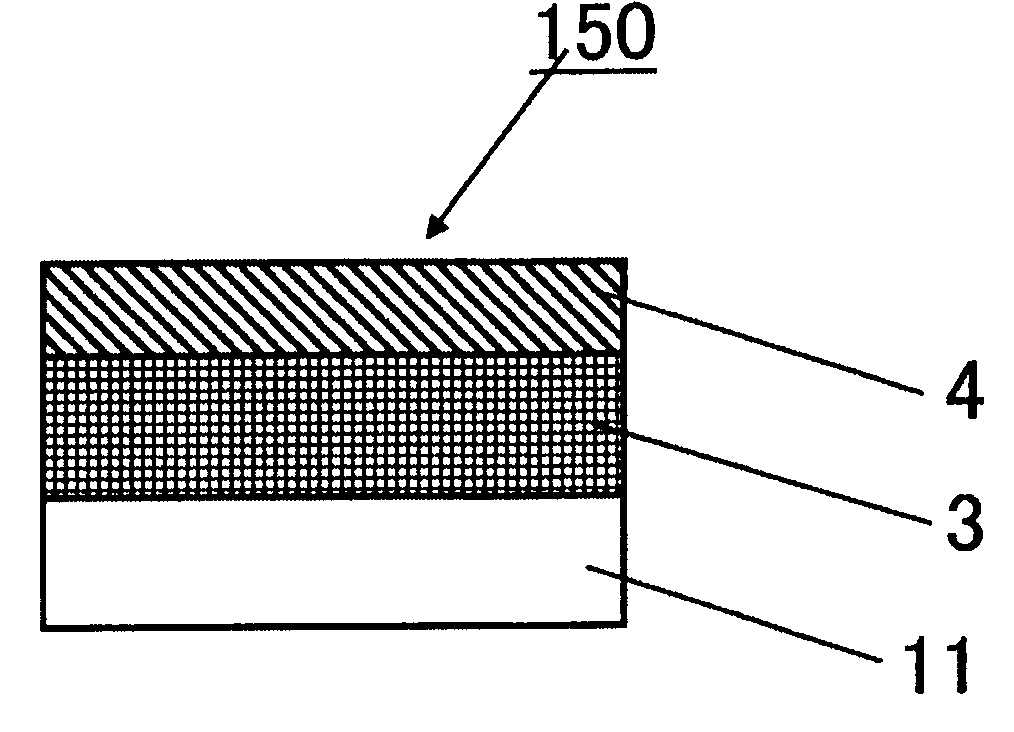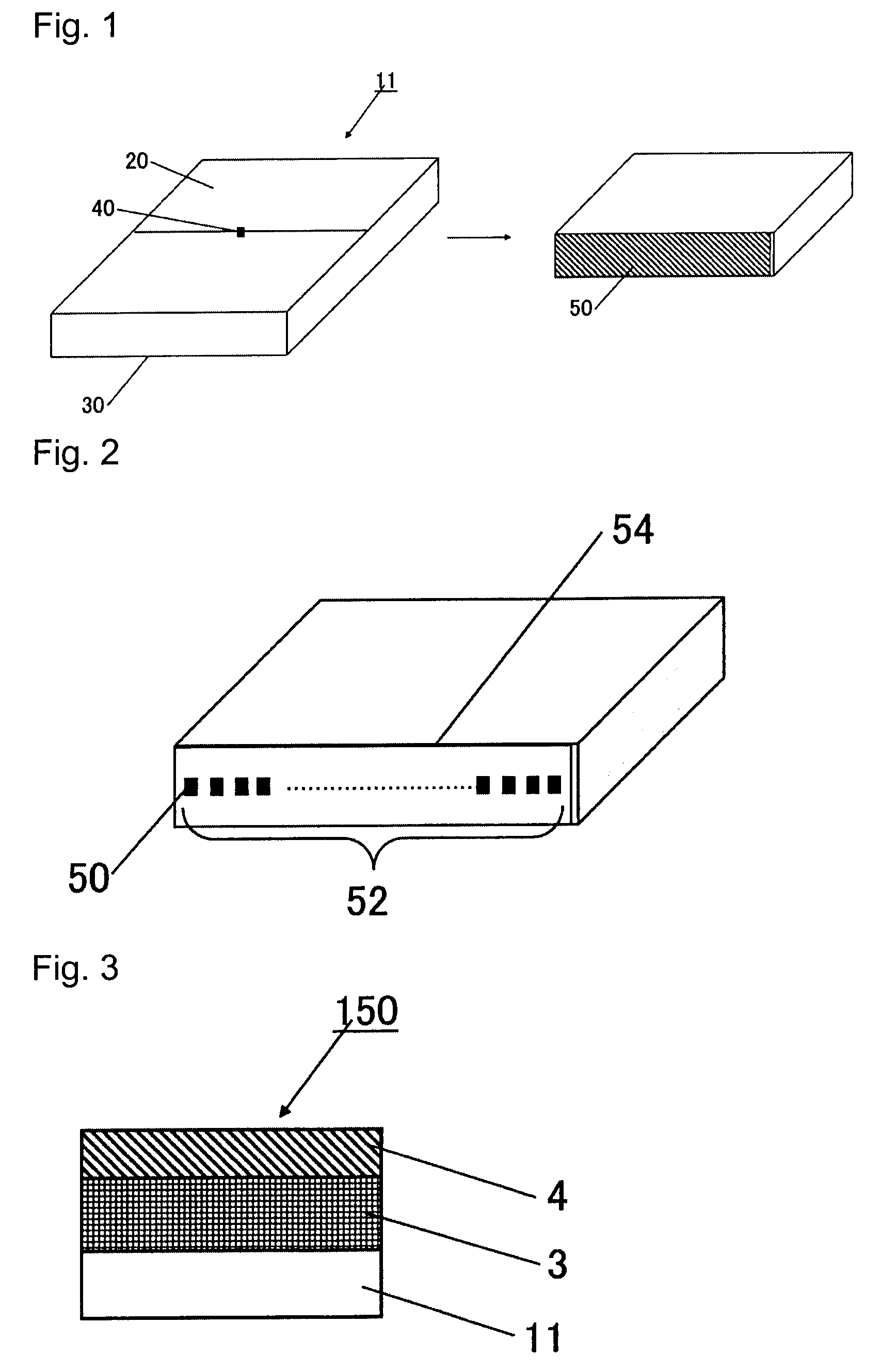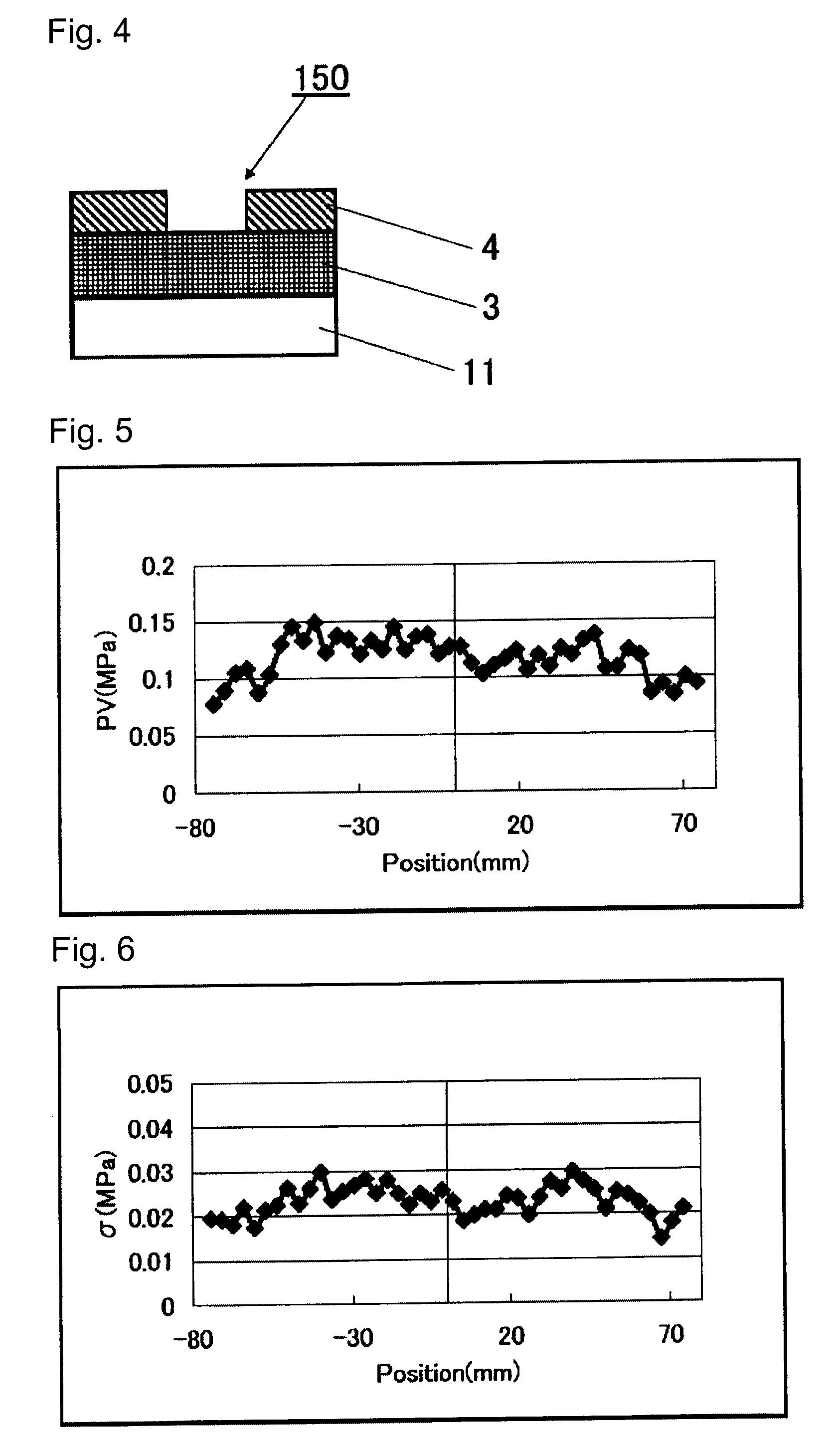Substrate for EUV mask blanks
a technology of euv mask and substrate, which is applied in the direction of photomechanical equipment, instruments, manufacturing tools, etc., can solve the problems of not being able to determine the measured stress as the stress of the substrate itself, and the conventional photolithography method is close to the resolution limit, etc., and achieves excellent flatness.
- Summary
- Abstract
- Description
- Claims
- Application Information
AI Technical Summary
Benefits of technology
Problems solved by technology
Method used
Image
Examples
example 1
[0203]TiCl4 and SiCl4 as glass-forming materials of TiO2—SiO2, which have been each vitrified, are mixed. A mixed product obtained is heat-hydrolyzed (flame-hydrolyzed) in an oxygen-hydrogen flame to obtain TiO2—SiO2 glass fine particles, and they are deposited and grown on a seed rod rotating at a rotation speed of 25 rpm to form a porous TiO2—SiO2 glass body (Step (a)). Here, the variation widths in the gas temperatures of SiCl4 and TiCl4 in supply pipings are controlled to be within ±0.5° C., and a stirring mechanism of the source gases is provided at a point just before supplying SiCl4 and TiCl4 to a burner.
[0204]In order to improve a handling property, the porous TiO2—SiO2 glass body obtained is maintained at a temperature of 1,200° C. for 6 hours in the atmospheric air in a state that the glass body is deposited on a substratum, and thereafter, the glass body is taken out from the seed rod.
[0205]Thereafter, the porous TiO2—SiO2 glass body taken out is placed in an electric fur...
example 2
Comparative Example
[0218]A substrate is prepared in the same manner as Example 1 except that the angle of the burner is set to 4° with respect to the vertical direction in Step (a). Also in this Example, the number of particles (foreign substances) having a size of at least 60 nm present on a surface of each substratum is measured by a photomask surface defect inspection machine, and only substrates in a level of no problem are selected.
[0219]With respect to each substrate obtained, the maximum variation (PV) of the stress, the standard deviation(σ) of the stress and the surface roughness (rms) are measured. Tables 1 to 6 show the results, and FIGS. 8, 9 and 10 show the graphs.
TABLE 1Example 1Example 2MPositionStressStressStressStressNo.(mm)PV (MPa)σ (MPa)PV (MPa)σ (MPa)1−74.1750.0780.0200.6060.1082−70.7250.0900.0190.4720.0833−67.2750.1050.0180.6670.1154−63.8250.1090.0220.5580.0835−60.3750.0880.0170.5580.1156−56.9250.1030.0210.4830.1027−53.4750.1300.0220.7570.1568−50.0250.1460.0261....
example 3
[0221]A substrate is prepared in the same manner as Example 1 except that the following Step (d-1) and Step (d-2) are carried out instead of Step (d).
[0222]A transparent TiO2—SiO2 glass body obtained is heated at 1,700° C. in a carbon mold having a cubic shape of 175 mm cube, to obtain a formed TiO2—SiO2 glass body (first formed product) having a cubic shape of 175 mm cube (Step (d-1)).
[0223]The outer periphery of the formed TiO2—SiO2 glass body obtained is cut so as to have a cross section of 123 mm square centering on he original center line, and it is heated again at 1,700° C. in a cubic carbon mold of 175 mm cube, to thereby obtain a cubic formed TiO2—SiO2 glass body (second formed body) of 175 mm cube (Step (d-2)).
[0224]Also in Example 3, the number of particles (foreign substances) having a size of at least 60 nm present on a surface of each substratum is measured by a photomask surface inspection machine, and only substrates in a level of no problem are selected.
[0225]With re...
PUM
| Property | Measurement | Unit |
|---|---|---|
| surface roughness | aaaaa | aaaaa |
| surface roughness | aaaaa | aaaaa |
| fictive temperature | aaaaa | aaaaa |
Abstract
Description
Claims
Application Information
 Login to View More
Login to View More - R&D
- Intellectual Property
- Life Sciences
- Materials
- Tech Scout
- Unparalleled Data Quality
- Higher Quality Content
- 60% Fewer Hallucinations
Browse by: Latest US Patents, China's latest patents, Technical Efficacy Thesaurus, Application Domain, Technology Topic, Popular Technical Reports.
© 2025 PatSnap. All rights reserved.Legal|Privacy policy|Modern Slavery Act Transparency Statement|Sitemap|About US| Contact US: help@patsnap.com



